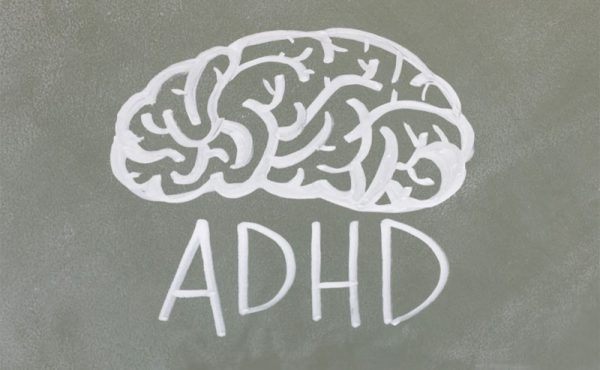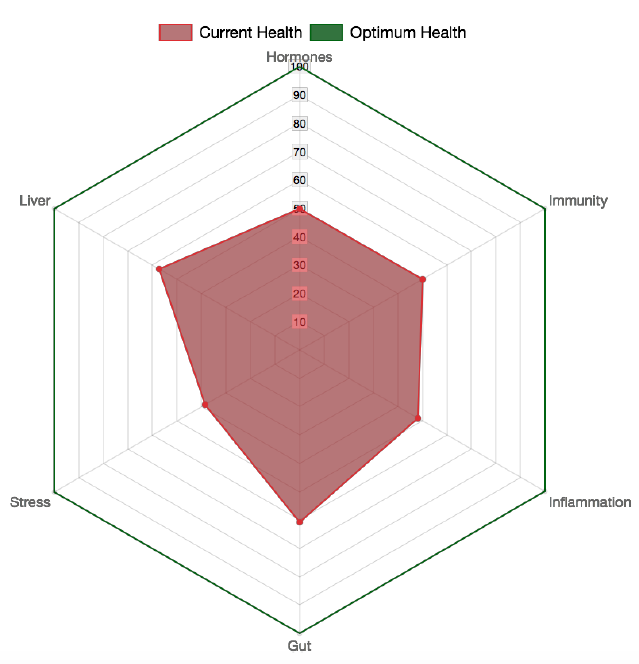Copper: The Key Mineral For Emotional, Hormonal & Mental Health
Copper is a mineral that has had me fascinated for a long time now. It all started with me finding out that I’ve had Pyrrole disorder my whole entire life. It’s a condition I increasingly see in clinic with various outcomes, but primarily as a huge influence on mental health presenting with irritability, inability to cope with stress, anxiety, depresssion, ADHD, addictions and in extreme cases – schizophrenia and other mental health issues.
In Pyrrole disorder, there is a life-long deficiency of zinc – this allows copper to accumulate, primarily in the liver and the brain, with all sorts of far reaching consequences. However, many people present with copper dysregulation, despite not having Pyrrole disorder.
Copper is found in many foods
The highest concentrations in chocolate, seafood, nuts, avocado, mushrooms and french fries. Often, a copper toxic person will crave these precise foods on a daily basis.
I remember a time when all I wanted to eat every day was prawns with avocado, almonds and chocolate!
Other major sources of copper
- Copper water pipes leech minute amounts of copper into our water – especially older houses built before 1980 will have copper pipes. This may seem like a minor source, but if you already have a copper overload, this can ‘tip you over’ your copper levels.
Once I was living in an old house with copper pipes and without a proper reverse osmosis filter- within 1 month I started getting chin acne (hormonal) and other signs of hormonal dysregulation. After moving to a place with a proper water filter, all this stopped.
- Both the oral contraceptive pill and the copper IUD increase the body burden of copper. Definitely to be avoided if you have a copper/zinc imbalance or Pyroluria.
- Copper is built up by the baby during gestation – this is a normal physiological process because copper is important for building new blood vessels. After the baby is born, it is supposed to balance this storage out by taking in zinc from the mother’s milk and protein rich foods. If the mother is zinc deficient, like 90% of women today- this process doesn’t take place and the child ends up with a strong copper/zinc imbalance.

What does copper have to do with mental health?
When we focus on the key minerals that influence the functionality of our brain, we need to pay close attention to 2 of them: zinc and copper.
To make things simple, you can think of zinc as the ‘balancer’ – it’s the calming, relaxing, stabilising mineral. It is a strong anti-oxidant. It helps you make rational decisions, it helps make the brain’s calming neurotransmitter – GABA, it is the body’s ‘anti-depression’ tool.
Copper on the other hand is what I lovingly call ‘the crazy one’.
Copper is a conductor of electricity – it fires up the brain. It is a pro-oxidant or ‘free radical’. Copper acts as a neuro-toxin when in excess and can alter the levels of neurotransmitters in the brain, especially dopamine and noradrenaline.
It will create imbalances that can swing a child into major tantrums, an adult into major anxiety and depression and it’s dysregulation is becoming so common, for reasons outlined below, that what I believe we now have is an epidemic of copper/zinc imbalance leading to major mental health consequences.
Beyond mental health, increased amounts of copper in the body are often associated with:
- anemia iron deficiency (copper blocks iron absorption)
- low thyroid activity
- allergies
- headaches
- constipation
- hair loss
- fungal overgrowth including candida
- skin conditions
- appetite disturbance
- hyperactivity
- learning disability
- and more.
Copper and zinc need to be in proper balance with one another.
To measure this, I use both blood and hair tissue mineral tests. What I often find is that these 2 minerals are out of balance in a major way in many people.
Key reasons for high copper and low zinc so commonly seen today include:
- Extremely zinc deficient soils – particularly in Australia. The lab blood ranges for zinc in Australia are extremely low compared to more ‘zinc replete’ countries. When zinc is low, copper will usually be high. There are often exceptions to this- some people have low levels of both zinc and copper. Copper deficiency symptoms are often the same as copper excess- which is why only a skilled practitioner can help figure out what is really going on.
- Low intake of foods containing zinc. The rise of vegan and vegetarian diets is responsible for the decline in zinc intake as zinc is largely present in appreciable quantities in meat and seafood.
- High intake of copper containing foods: chocolate, nuts, avocados are the big ones. These are not problematic when zinc intake is adequate, however this is rarely the case these days.
- Low intake of vitamin C containing foods- such as fruit and vegetables. Most people do not take in enough vitamin C- a key antioxidant that antagonises copper (a free radical).
- Excessive use of iron supplements: iron and zinc compete for absorption. Many people are self-prescribing iron as soon as they feel the slightest twinge of fatigue. Iron deficiency is multi-factorial and requires proper evaluation before prescribing supplements. Read all about iron deficiency and its many causes here.
- The extensive use or oral contraceptive pills and copper IUDs. These birth control methods significantly drive copper up in the body via their effect on oestrogen levels (copper and oestrogen are good friends:), so vast numbers of women are spending decades on oral contraceptives completely altering their mineral metabolism.
- Copper in the pipes and in the water, especially in older houses.
- Copper sulfate is a key anti bacterial agent used in public pools.
- Copper passed onto the fetus via the mother– lots of kids I see in clinic have a zinc/copper dysregulation from birth. Dr Igor Tabrizian has written extensively on this in his excellent book “Visual Textbook of Nutritional Medicine”. Babies are inheriting their mothers’ copper stores, the impacts of which are far reaching, starting with a dysfunctional immune system due to a complete lack of zinc.
- Environmental oestrogens (xenoestrogens) from plastics, hormones in cattle and dairy, personal care products and even thermal cash register receipts- all oestrogens drive up copper in the body. They go hand in hand.
What does high copper look like?
The scary scenario I see in clinic is a child born to a mum who has been on the pill for over 10 years before giving birth, who is or was for some period in life a vegetarian, regularly swims in public pools, lives in an older house with copper pipes and drinks from plastic bottles. This is a very common presentation.
This child is likely to have several sensory and developmental disorders as well as fussy eating (zinc deficiency!) and major tantrums. This child will have a compromised immune system, food and environmental allergies, most likely eczema and frequent ear infections. Without a proper copper and zinc balance, it is very difficult to have a fully functioning brain and immune system.
The mum will often have adrenal fatigue, be exhausted, have fluid retention and bad PMS symptoms (all from hormonal dysregulation), feel run down with frequent colds and flus, be irritable and probably on an anti-depressant, have mood swings and ask herself ‘Why do I feel so tired every day?’
Any of this sound familiar?
What else goes wrong with too much copper?
One of the world’s leading experts on minerals, Australia’s Dr Igor Tabrizian has evaluated the effect of excess copper and narrowed it down to these key areas:
- Hormone imbalance– xenoestrogens such as pesticides, petrolium products, plastics and pthtalates and hormones in our food supply, as well as hormonal contraceptives block the body’s ability to excrete copper.
- Joint pains– copper is needed to make collagen and elastin.
- Chronic fatigue– high copper predisposes us to viral, fungal and yeast infections- often the key underlying causes of chronic fatigue. Also, copper blocks iron from being absorbed, often leading to fatigue.
- Anxiety and depression- copper is needed for neurotransmitter production, however in excess it blocks serotonin (the happy neurotransmitter) and melatonin (your anti-oxidant sleep hormone).
- Cancer – copper destroys key antioxidants: Vitamin C and Vitamin E. In conjunction with a high copper person’s predisposition to infections due to lack of zinc, these factors combine to increase cancer likelihood. Copper promotes angiogenesis (new blood vessel formation- important in pregnancy), however in cancer, this can promote metastasis.
Copper interferes with the function of body tissues so it is not detectable on regular blood tests (although these can often indicate a copper/zinc imbalance), x-ray or ultrasound.
The best way to evaluate copper stores is hair tissue mineral testing. You can book that with me here if you are interested.
How to deal with excess copper
There are several key treatments I use in clinic to address copper dysregulation.
The key nutrients are zinc and vitamin C, as well as a micro-nutrient called Molybdenum, which balances copper in the body. The doses of these nutrients vary dramatically by individual and require a full assessment including blood tests, hair analysis, a full review of history and environmental toxin exposure.
There are numerous other methods that help address copper issues.
A diet full of antioxidants is recommended and avoiding high copper foods helps the body re-balance itself.
It is absolutely essential to evaluate the need for hormonal contraceptives as these have disastrous consequences on women’s health, especially in the presence of elevated copper.
Copper is an extremely under-estimated mineral in terms of its impact on our health and having it in proper balance can have dramatic consequences.
Treatment of copper excess in children can be quite fast, however in adults there is no quick fix and clearing excess copper to restore optimal health requires diligence, commitment and a firm desire for wellness.
I will go as far as to say that this is one of the trickiest imbalances facing our health today, and one with the biggest health benefits once rectified.
If you suspect you have a copper imbalance based on the symptoms described above, book your consult today.
References: Dr Tabrizian, I, “Visual Textbook of Nutritional Medicine”, NRS publications, 2012











Thanks for sharing this Maria! Wish I would have found and read this before getting my Copper IUD, or at least earlier cause I got very very sick from it without knowing why and blamed myself. Lost many treasure things because of it. Now trying to heal. Complementary healthcare seems to be way more developed in Australia. I live in Sweden and here ”we” have an almost naive strong trust in conventional healthcare when it comes to treating all health-related problems. We are lucky to live in the time of internet to find information. That is what saved my life a couple of months ago.
/All the best, Karin
Hi Karin, Thank you for sharing! Yes copper excess can be very toxic. I work with clients from anywhere in the world via zoom:)
No doubt you’re well intended, and I suppose my comment won’t be approved, but there is so much misinformation here I feel compelled to speak up.
There is no such thing as pyrole disorder. It was a hypothesis based on the fact that patients taking LSD(!) in the early 60’s had high levels of pyrroles in their urine. Hoffer at the time then thought that it might apply to people NOT taking LSD, but who had some similar psychiatric symptoms.
Also, for the most part…there is no such thing as copper toxicity, unless one has Wilson’s disease and/or is eating lobster, a lot of shellfish or a lot of chocolate. Copper isn’t abundant in very many foods AT ALL, yet zinc IS in many of the foods we eat every day.
In fact, studies show that patients given 10mgs a day for 2 months showed almost NO CHANGE in their copper or ceruloplasmin levels.
There are also studies that found hair analysis to be highly unreliable.
Now why am I so passionate about this? Because I’ve been sick for 26 years with ME/CFS, and was told back in 2011 that I probably had copper toxicity. Instead of questioning the diagnosis, I went along with the suggested supplements and hair analysis, and only got worse. If I’d only known. And for the last 8 months I’ve suffered from anemia, only to find out that one needs copper to work with iron, and guess what — my copper is on the low side. Lower than a year and a half ago.
Anyway, no doubt we’ll agree to disagree. I just find it very curious that “pyroluria” is diagnosed almost solely in Australia. I have no idea why, because here in the US all sorts of weird things — like ‘Morgellons disease’ are allowed.
Thanks for taking the time to comment Kelly. I’m sorry your health wasn’t managed well by your healthcare providers. HTMA needs to be very well understood to be used productively. Pyrroles are a sign of oxidative stress, not a ‘disease’ in itself and is a useful marker when used productively. The reason it is more commonly tested in Australia is because we have a very well developed complementary health practice which is far advanced over the US/Canada/UK and most other countries. It is certainly not the only thing to consider but it is a useful marker when used by knowledgeable clinicians. Anecdotal evidence is very different from clinical evidence from hundreds of clients/patients.
I had copper IUD removed in Feb and have had some improvements in all sorts of symptoms. Do feel a lot happier etc. Pretty sure I am dealing with some copper overload issues for sure. Read a lot of amazing things out oysters and their mineral content, especially high zinc which is good for the copper overload, so I bought some oyster supplements to try, but I’ve now realised they’re high in copper too! Is this a good or bad idea? Would the high zinc content make them worth it and kind of balance it out, or is it better to try a different approach?
Thanks in advance
Not worth it if dealing with copper toxicity as they are high in zinc AND copper. Need to have copper assessed with bloods and hair analysis, feel free to book in with one of my team to address via online calendar.
I have AFIB, I am taking Lopressor to. control it. I wake up with my heart rate high 182 or more. I get tit down by taking small amounts of Lopressor at a time till it comes down. I crave chocolate and shrimp and Lobster. These make my heart rate go shy high. I have been researching copper effect on heart rate. I feel copper could be my problem. My PC po pooed my questions. Discussed it with my Nephrologist and he said it is possible. What would you suggest for testing?
Hi Faith, I recommend working with a practitioner and do a serum copper blood test and hair mineral analysis. The relationship to all other minerals is important.
thx
I think you would be wise to consider that copper toxicity (elemental copper) is VERY different from the essential bioavailable copper that most people are deficient in. You can be copper toxic and copper deficient at the same time, and in fact both have the same symptoms.
Hi Tiffany, yes absolutely one can be copper toxic and not be able to utilise copper at the same time. In clinic we conduct both blood and hair analysis to understand if someone’s copper is working for them or not. thx
Hi there,
I am from the UK currently based in Melbourne.
I had a copper IUD which I had removed about 6 weeks ago!
I was suffering with panic attacks so I needed it to be removed. Since removal I’ve been a little bit better however at certain times during the month I’m still struggling.
I really want to get to the bottom of this issue and heal completely.
I have seen you offer a Hair Mineral Analysis.
Do I just book this and then book a follow up consultation not too sure how it works?
Speak soon
Kind regards,
Ciara Alford
Hi Ciara,
I’ve sent you an email. thx
Good day,
I don’t know where to start…kind of giving up. Blood work show high ferritin, normal levels of copper, some proteins out of range, epileptic at age 14…son now epileptic at age 12, he has high levels of parathyroid hormones, Alkaline phosphatase is very high, one of the Vitamin D tests came back high.
Hi Dione,
The best place to start is to book a consult with one of our team, thx
Hi Maria. After having a baby 6 months back I decided to try birth control for the first time in my life. Afraid of hormones I chose the copper iud. I’ve been getting worse and worse regarding my panic and agitation. I tried telling doctors that I think it has something to do with iud and they tell me it’s impossible unless I have Wilson’s disease. A few days ago I got blood tests back and suddenly I have anemia issues and low thyroid which I’ve never had issues with in my whole life. I got them to give me a copper test as well and it came back at 145.4. Could the higher copper in my body really be the cause of all these mental and physical issues I’ve been having?? It’s been driving me nuts trying to find the culprit. Thank you in advance!
Hi Kylie,
that level of copper is sky high- yes 100% it would be having an impact. It’s probably not the best choice for you.
Kind regards
Hi Maria, I’ve had a hair analyst done as my candida issue wasn’t improving and it tuns out I have high copper levels 11.0 . I was given a sheet of dietary foods to avoid but nothing on what I can have, except high protein foods and moderate amounts of unrefined carbs, also no calcium foods and reduced fats intake. I’ve been googling and copper is in just about every thing. I’am wondering what to eat, is buckwheat or oats ok. I’am taking 40 mg zinc and having a green detox powder drink a day. Would appreciate your thoughts on this. Cheers Lesley
Hi Lesley, i don’t believe in eliminating copper foods, there are too many highly nutritious foods with copper content. It’s a lot more about addressing adrenal health and balancing oxidative stress. If you need individual advice on nutrition, feel free to book in online: https://www.truefoodsnutrition.com.au/clinic-bookings-2/bookings/
thx
I have been treating my Pyrrole disorder for 3 years and developed serum copper and ceruloplasmin deficiency. I can’t seem to find any information on how to address this in the context of Pyrrole disorder and balancing copper when taking high dose zinc.
Hi Danielle, it’s tricky but do-able. Need to work on liver and adrenals to improve ceruloplasmin, but need to evaluate in context of your whole case. Feel free to book a consult online. cheers
I would like information on how to get a hair analysis test done for myself and my 14 year old daughter. She is struggling with mental health issues, and it would be great to get a test done to see how we can balance things out.
Please send me information about this. Thank you for your time!
Katrina Reinhardt
Hi Katrina, thanks for your inquiry, feel free to book an initial consult in my calendar on the homepage. From the initial consult, we can order the hair analysis. Kind regards
Hi Maria
I’d like to do the hair analysis test. Could you please send me an email with more details? (cost and if it can be done by mail)
Thank you
Luciana
I would like information on how to get a hair analysis test done for myself and my 14 year old daughter. She is struggling with mental health issues, and it would be great to get a test done to see how we can balance things out.
Please send me information about this. Thank you for your time!
Katrina Reinhardt
Wow… I’m so happy I found your site. Your articles are answering so much for me. I have Pyrroles and lately I’ve not been watching my health and I’m noticing it.
I will get myself sorted and book to redo my test through you. Time to look after number 1 again!
Thank you are amazing ☺️
Awesome Carol, thanks!